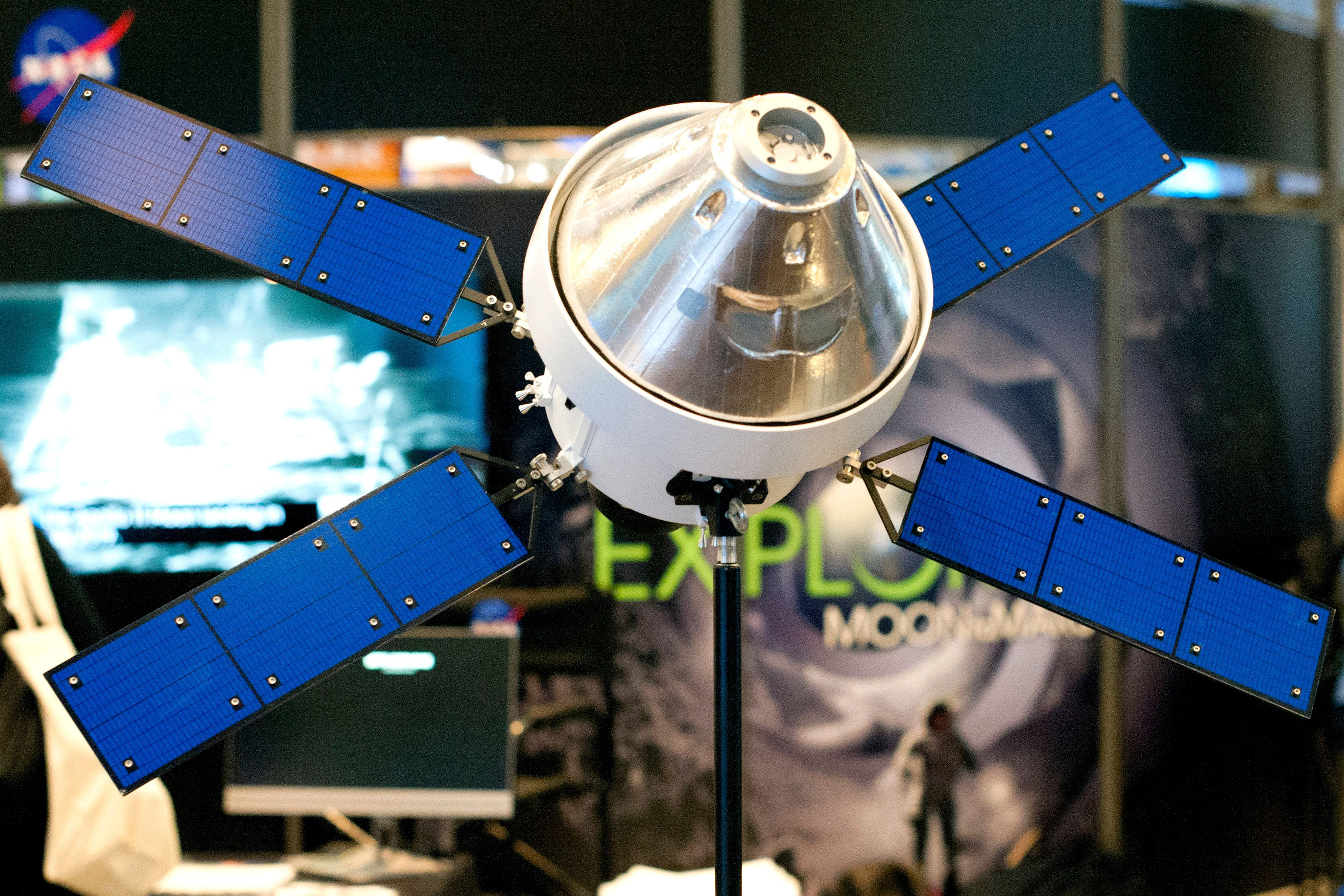
“No human ever has to go into the danger zone and no humans are tied up trying to manage all of this,” said Touchton, who led the autonomy department at Penn State University’s Applied Research Lab prior to joining Leidos in 2016.
The biggest barrier isn’t technical or regulatory, Touchton said. It’s the cost of satellites today, especially since local government services that typically do this kind of work already have constrained budgets.
“When you do a civil application like this, the agencies that do this kind of work typically wouldn’t have the budget to pay today’s prices,” Touchton said. “We’re kind of counting on the industry and the rapid growth it’s experiencing” to bring down prices.
Touchton, who also previously served as the managing director of autonomous systems for Honeywell’s Business Innovation Center, also talked about international efforts to regulate autonomy in space and Leidos hope that other companies’ satellite constellations will include its software so thousands of satellites that could be available in an emergency.
This transcript has been edited for length and clarity.
What do you mean by autonomy in space?
In space, some things get easier and some things get harder. … The thing that gets easier is all of the satellites can always figure out where other satellites are since they are on a very specific orbit around the Earth. … We don’t have to guess what the satellite will do next. … Sometimes it’s harder to communicate. If we’re talking about a defense application, we have adversaries that might try to disrupt communications. We have to be more clever about how we operate if satellites can’t talk to each other or they can’t get a downlink to Earth.
What are some examples of how autonomy can be used in space?
One scenario is firefighting and search and rescue. … If it’s a simple fire, there’s plenty of existing technology that can handle that. … But if you look at a national park that’s quite huge and maybe has isolated enclaves where people might gather … and they may or may not stay on marked trails … that’s where it starts to get complicated.
We also studied after-action reports of actual forest fires. … When we finally take this to a product, we’ll have interviews with subject matter experts to find out all of the special cases that crop up that we have to deal with. … The more artificial intelligence you put into the modules, the more human it can be. … and not only just more human-like, but also more collaborative.
In our example: Some local authority realizes there’s a fire. It tasks a satellite to look at a whole area. It spots cars parked near a trailhead. … One drone starts its search along the trail for humans. … It’s also smart enough to know if it hasn’t found someone that it should start looking near the trail … then keeps getting further and further away from the trail. … It can evaluate the landscape, and will know humans couldn’t have gone one way if a cliff is too steep to climb. … When it finds a human, a different kind of drones goes and communicates with hikers through loud speaker or a billboard display … and basically says, “Follow me and I will lead you out of here.” That’s especially important if the most logical route is closest to the fireline, it can lead you a less logical but safer way. … Once they get to a road, an autonomous ground vehicle carries them out to the rally area. … No human ever has to go into the danger zone and no humans are tied up trying to manage all of this.
How far away is this technology?
Having satellite constellations in place and taskable by civil authorities … might be five to 10 years away. That will be driven by the rapid proliferation of low earth orbit by companies. So SpaceX, Blue Canyon Technologies … and other companies are launching all these satellites mainly for communications purposes. The idea is that if you’re going to start launching them for that, why not carry some additional equipment on there to participate in this kind of activity?
We don’t have to wait for that though. We have other ways to do high altitude surveillance with larger Predator-type drones that can stay up for longer and see a broader area. … It’s much more convenient if there’s already a constellation up there, because there will always be someone overhead….but we can get by if we have access to a Predator-style drone that can do high level surveillance.
It is probably technically achievable over the next couple of years. … The problem there is affordability. When you do a civil application like this, the agencies that do this kind of work typically wouldn’t have the budget to pay today’s prices. We’re kind of counting on the industry and the rapid growth it’s experiencing. … We are already observing a fairly rapid decline in the cost of accomplishing this type of technology, making it more accessible to civil applications like this one.
The other thing that could accelerate that even more is if the federal government … decides to chip in and make this a national asset that’s rapidly deployable..
So you see this as an add-on to existing satellites?
Yes. The goal is to get this hardware and software on every satellite that goes up so they can be tasked in an emergency.
What are the regulatory burdens to this becoming a reality?
Nothing that isn’t already in progress. … The regulatory agencies are working hard to stay out in front of this. I’m super impressed by how hard the Federal Aviation Administration and Department of Transportation are working … to get the certification process for having autonomous vehicles in place.
How do you certify artificial intelligence on a vehicle? There’s a frenzy of work across multiple different standards bodies with participation from these government agencies … not just in the U.S. but also the European and Asian equivalents to our FAA and DOT that are hammering out the regulatory changes that are going to have to take place.
I like to talk about autonomy versus automation. The distinction doesn’t matter as long as you realize it’s a spectrum. … We talk about human independence, mission complexity and environmental complexity. It’s autonomy … [when it is] human independent, but the mission and environment are pretty simple. The machine you wave your hand under to get a paper towel, that’s clearly automation. It’s responding to sensors, but its mission and environment are really simple and straightforward. When you start having complicated missions and environments … it moves into this idea of autonomy. … When we get really good at something in autonomy, it becomes everyday fare and people think of it as automation. Anti Lock brakes are a good example of that. … My father-in-law used to say he’d never drive a car with a computer telling him how to stop his car. Five years later, he wouldn’t buy one without it.
Source: politico.com
See more here: news365.stream





